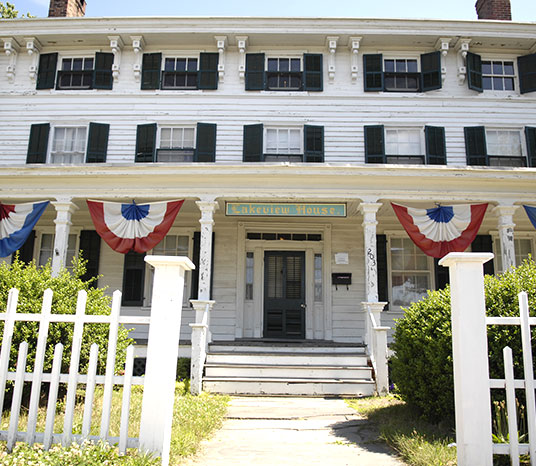TRENTON — In June 2017, more than 50 organizations gathered outside the New Jersey Training School for Boys in Monroe calling for its closure, stating 150 years of youth incarceration is enough.
Roughly seven months later, Gov. Chris Christie heeded the call.
“The New Jersey Training School at Jamesburg is one of the oldest, most antiquated youth prisons in the nation and the time has come to close its gates for the last time,” Christie said. “We have an obligation to serve our youth and protect our communities, but now we will do so using a model that maximizes opportunities for personal rehabilitation and growth of developing young people.”
On Jan. 8, Christie announced a $162 million bond financing to fund the closure of the New Jersey Training School for Boys, known as Jamesburg, and a girl’s prison, the Female Secure Care and Intake Facility, or Hayes, in Bordentown.
Two much smaller state of the art juvenile rehabilitation centers are planned, one in Ewing Township, Mercer County, and another in Winslow Township, Camden County. Each will hold between 40 and 72 residents.
Ryan P. Haygood, president and CEO of the New Jersey Institute for Social Justice, which launched the “150 Years is Enough” campaign calling for the closure of the prisons, said the governor’s plan to close the prisons is one of the most significant youth justice reforms in 150 years.
“We thank Gov. Christie, Attorney General [Christopher] Porrino, and the entire administration for their leadership in declaring that 150 years of failed youth incarceration is enough and that it is time to fundamentally transform our broken youth justice system,” he said.
Christie said Jamesburg, which was built in 1867 to house thousands of young people, and comprised of 68 buildings sprawled over 900 acres, is no longer effective or sustainable.
The Training School presently averages just 144 residents, which Christie said is due to the state’s success in reducing youth incarceration. He said the incarcerations of such a small number of youth on a Civil War-era aging and largely empty campus, is inefficient, impractical and expensive, according to a prepared statement.
With an annual budget appropriation of $44.2 million, the cost to house a single resident at the Training School is more than $300,000 per resident per year. Porrino has contrasted the cost to more than four years at Harvard University, including room and board, with enough cash left over to purchase a luxury car as a graduation gift, according to the statement.
The investment required to construct the new facilities will be offset by approximately $20 million a year in savings in ongoing operation costs at Jamesburg and Hayes. These savings can be applied to support additional therapeutic and delinquency prevention services. They will further enhance community safety and serve youth and their families before they have contact with the juvenile justice system in the first place, according to the statement.
“We’ve worked hard to reach this milestone, overcoming numerous political, logistical, and legal challenges, in service of juveniles who have entered our juvenile justice system,” Porrino said. “With the closure of a Civil War era youth prison, the construction of state of the art rehabilitation centers, and cost savings that can be repurposed for education and reentry of juvenile offenders, there is no question we will have better outcomes.”
The Jamesburg facility is also in a remote location, with little, if any, access to public transportation, making family visits extremely difficult and severely limiting the critical role families can play in the care and rehabilitation of their loved ones, according to the statement.
The state initiative represents the largest ever investment in New Jersey’s juvenile justice infrastructure and was made possible by New Jersey’s successful implementation of the Juvenile Detention Alternatives Initiative (JDAI) that began in 2004 and has reduced the population at New Jersey’s juvenile detention centers by 68 percent, with admissions down 76 percent. Subsequent commitments to the Juvenile Justice Commission (JJC) have been reduced by 82 percent, according to the statement.
These efforts are supported by the Annie E. Casey Foundation, the Advocates for Children of New Jersey, and the Institute for Social Justice.
“New Jersey is nationally recognized for its success in safely reducing the number of youths who are incarcerated and for implementing community-based alternatives to detention,” JCC Executive Director Kevin M. Brown said. “This complete overhaul of New Jersey’s juvenile secure settings is precedent setting and will prompt others to follow throughout the country, just as they followed our lead in drastically reducing the number of pre-sentenced juveniles held in secure settings through the Juvenile Detention Alternatives Initiative.”
Haygood said New Jersey has the worst racial disparities among its incarcerated black and white youth in the nation.
“We look forward to working with the incoming administration and the Juvenile Justice Commission to chart the way forward for closing Jamesburg and Hayes, addressing the root causes of these staggering racial disparities, investing in the creation of a community-based system of care, and developing more rehabilitative out-of-home settings for our young people,” he said. “Our primary goal is to ensure that our state’s youth — regardless of the color of their skin — receive the rehabilitation they need to mature and grow into responsible adults. Doing so would position New Jersey to be a national leader in transformative youth justice.”
The New Jersey State House Commission approved the plan on Dec. 7, with the subsequent approval of the Economic Development Authority on Dec. 12. The New Jersey Joint State Leasing and Space Utilization Committee gave the final approval to the plan on Dec. 18 and the bond financing closed on Jan. 8.

